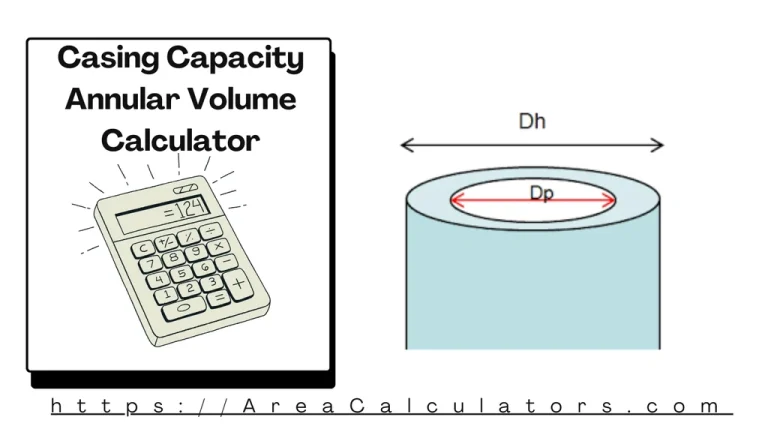Silo Capacity Calculator
To calculate silo capacity, use the formula for the volume of a cylinder: multiply π (pi) by the square of the radius (r²) and then by the height (h) of the silo. This provides the capacity in cubic units.
The Silo Capacity Calculator is a valuable tool for agricultural, industrial, and construction professionals. Accurately determining silo storage capacity is essential for managing materials such as grains, cement, or silage.
Whether you’re planning a new installation or analyzing existing infrastructure, this calculator ensures precise measurements, aiding in effective storage and resource management. Its user-friendly design makes it indispensable for efficient operations.
Formula
SC = π ∗ r² ∗ h
| Variable | Description | Unit |
|---|---|---|
| SC | Silo Capacity | Cubic Units |
| r | Radius of the Silo Base | Feet or Meters |
| h | Height of the Silo | Feet or Meters |
Solved Calculations
Example 1: Calculate the capacity of a silo with a radius of 5 meters and a height of 10 meters.
| Step | Calculation | Result |
|---|---|---|
| Compute base area | 78.54 m² | |
| Multiply by height | 785.4 m³ |
Example 2: Determine the capacity of a silo with a radius of 8 feet and a height of 15 feet.
| Step | Calculation | Result |
|---|---|---|
| Compute base area | 201.06 ft² | |
| Multiply by height | 3015.94 ft³ |
What is Silo Capacity Calculator?
The Silo Capacity Calculator is a practical tool that is designed to determine the storage capacity of silos, whether cylindrical, rectangular, or custom-designed.
It serves industries like agriculture, construction, and manufacturing by enabling users to estimate how much material, such as grain, cement, or silage, can be stored in their silos.
This calculator uses dimensions like height and diameter (or width and length for rectangular silos) alongside material density to compute the silo’s volume and capacity.
For instance, a cement silo capacity calculator or grain silo capacity calculator can help measure capacity in tons, cubic feet, or cubic meters.
Additionally, features like the silo capacity chart or silo storage capacity calculator provide quick references for standard silo sizes.
Moreover, the bunker silo capacity calculator and tower silo capacity calculator address specific storage needs. These tools simplify complex measurements and help optimize storage utilization for diverse materials.
Final Words:
In summary, the Silo Capacity Calculator is an essential tool for accurately assessing storage capacity, ensuring efficient material management across industries. With its precise formulas and versatile applications, it simplifies planning and maximizes silo efficiency.




